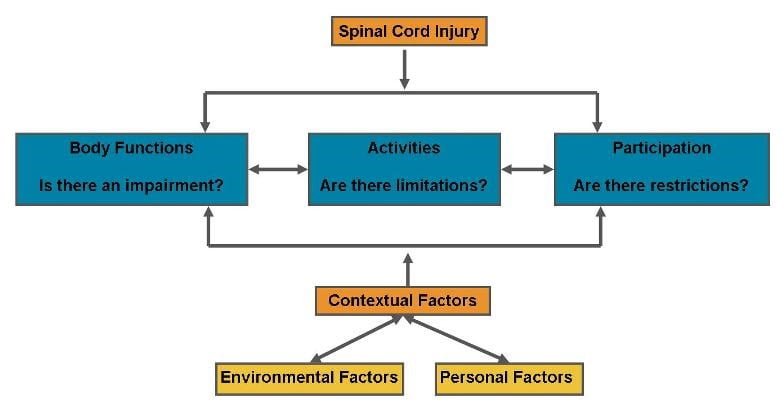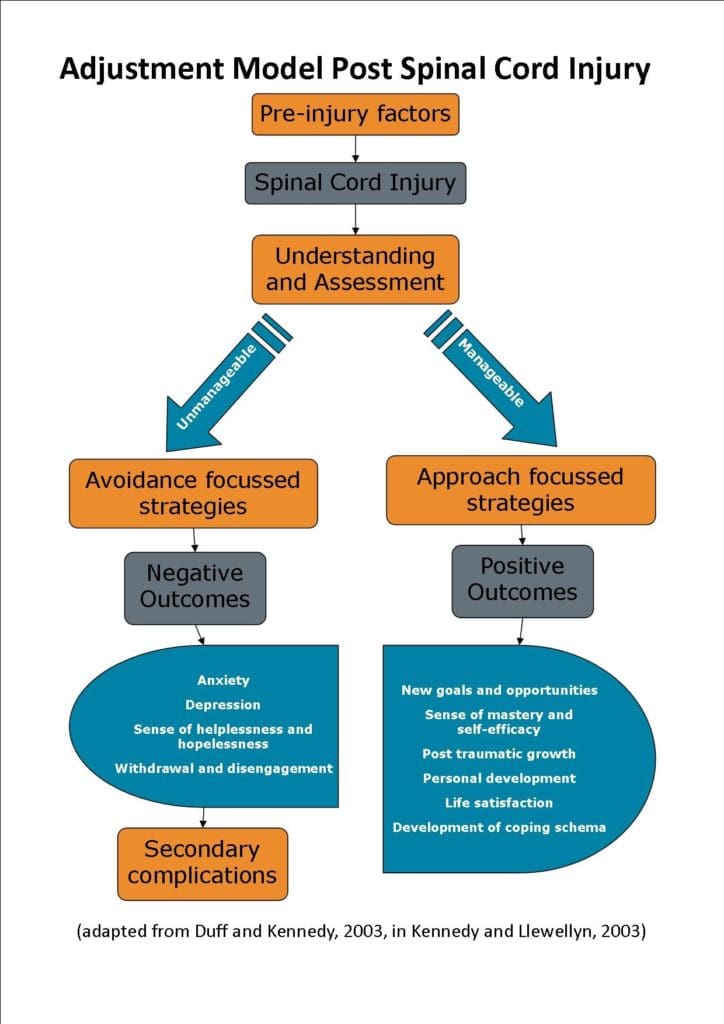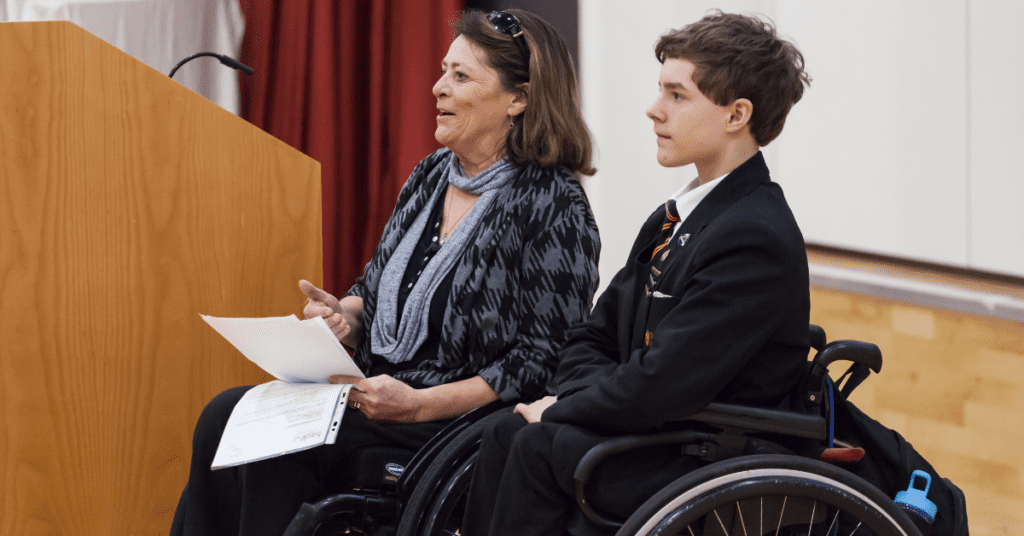This section outlines why Back Up has produced this toolkit, by highlighting the research which evidences the need for inclusive education.
‘Back Up’s education inclusion service provides education and support to staff at nurseries right through to university in understanding what is needed, and perhaps more importantly what is not needed, by children and young people with a spinal cord injury. In my experience, schools often are unaware and can struggle to make activities inclusive to all.’’
Cheryl Ali, Occupational Therapist, Spinal Cord Injury Centre at the Royal National Orthopaedic Hospital, Stanmore.
Back Up’s vision is a world where people affected by spinal cord injury can realise their full potential. As the only charity in the UK that runs dedicated services for children and young people with a spinal cord injury, we believe that they have the right to a fulfilling and active life. We inspire people affected by spinal cord injury to get the most out of life.
‘‘The key question is ‘How are we going to do it?’ – Not ‘can we do it?’’’
Head Teacher, primary school
We knew from listening to children and young people and their families that there was a need to support educational institutions in creating an inclusive environment for all children and young people with a spinal cord injury. We recognised that – with our wealth of experience in this area – we were well placed to meet this need.
Spinal cord injury in children and young people is relatively rare, but the complexity of managing medical, social and emotional needs can be daunting. When done well, the impact on the young people is lifelong, and the rewards for the individual, their family, the education institution and the state are immeasurable. Many contributors to this toolkit have thrived through the good practice illustrated here and have gone on to be solicitors, communications experts and Paralympic athletes.
Our values run through this toolkit and are illustrated in the stories and quotes that bring our advice and experience to life:
Driven by the needs of people with spinal cord injury, we are passionate about transforming lives
Through challenge and fun we open up possibilities to develop, achieve and get the most out of life
We respect individuality and embrace diversity
We strive for quality and excellence in all we do
The need
Spinal cord injury is permanent. It could be the result of an illness or something as simple as falling down the stairs. Spinal cord injury can affect anyone at any time.
At Back Up, we understand that spinal cord injury can be devastating. But we’re here to inspire everyone to get the most out of life. Children and young people with a spinal cord injury are more likely to be unemployed and experience lower community participation when they reach adulthood. They are also less likely to live independently or get married.
People affected by spinal cord injury are at the heart of everything Back Up does and every decision we make. Our work is led by need. Understanding published research into needs, together with our own research into the needs of specific groups of people, has helped to inform the way we deliver our services and what our strategy is for the future development of Back Up.
The education inclusion service was set up in 2009 in response to research conducted by the Institute of Education into the school lives of children and young people with a spinal cord injury. That need is as relevant now as ever, but with our support we know that full inclusion of children and young people with spinal cord injury at their nursery, school, college or University can and should be achieved.
Models of disability
Models of disability provide a framework for understanding the way in which people with impairments experience disability. They also provide a reference for society as laws, regulations and structures are developed that impact on the lives of disabled people.
Two main models which are frequently discussed are the ‘medical model of disability’ and the ‘social model of disability’. The medical model views disability as a feature of the person, directly caused by disease, trauma or a health condition. It calls for medical treatment or intervention, to ‘correct’ the problem with the individual. The social model sees disability as a socially created problem, not an attribute of the individual. It is society which ‘disables’ people through being designed in an inaccessible way and through disabling attitudes.
There is also the bio-psychosocial model of disability, which sees disability as an interaction between a person’s health condition and the environment they live in. It advocates that both the medical and social models are appropriate, but neither is sufficient on its own to explain the complex nature of one’s health. The bio-psychosocial model is useful to understand the support that spinal cord injured young people, their families and schools may need to ensure full inclusion in mainstream education.
Model of bio-psychosocial model:

(Amended from the World Health Organization’s The International Classification of Functioning, Disability and Health)
This bio-psychosocial model shows the complex and dynamic relationship between a number of inter-related factors. In this model a person’s ability to function is viewed as the outcome of the interactions between the medical factor (spinal cord injury) and contextual factors.
The contextual factors include external environmental factors such as social attitude and buildings, and internal personal factors, which include coping styles, social background, education and other factors that influence how disability is experienced by the individual.
The diagram identifies the three levels of human functioning:
Body Function
Activities
Participation
Within this model disability occurs when one or more of these levels of function are not working to their full potential: are there impairments in body function such as a significant loss of movement; are there limitations a person may have in doing activities; are there restrictions that a person may experience in participating or being
included in life situations.
Back Up feels that understanding how these levels and the contextual and medical factors are connected, and how they impact on each other, is crucial to effectively supporting people with a spinal cord injury to realise their full potential.
Model of adjustment post spinal cord injury
Personal and social factors will affect how a person initially perceives their situation as a person with a new spinal cord injury. Different people, at different times, may perceive their situation as unmanageable, or as a manageable challenge.
The scientific evidence shows that those that are able to perceive their situation as a manageable challenge will employ certain kinds of approach focused coping strategies such as using support available, and taking on challenges, building up their confidence and skills and adjusting emotionally to their situation, with long-term positive outcomes in life.
Those that see their situation as unmanageable will tend to use coping strategies aimed at avoiding the situation, such as disengagement from rehabilitation, withdrawal, alcohol and drug use. These behaviours on a long-term basis often lead to depression, anxiety and self-neglect resulting in hospitalisation for pressure sores and urinary tract infections.

Approach focused strategies include:
- Using emotional and practical support (friends, family, school)
- Behavioural activation – being included at school, having meaningful activities, accessing leisure services
- Acceptance – being able to talk about the situation, accept the reality of the situation
- Active problem solving and goal setting
- Positive reinterpretation – believing that something good can come out of the situation
This adjustment model helps to show how the schools and families inclusion service links to long-term positive life outcomes for children and young people with a spinal cord injury. Supporting schools to provide emotional and practical support, ensuring that the child or young person is fully included in all aspects of school life, and that the school environment encourages them to talk about their situation openly, will lead to more positive long term outcomes for children and young people with a spinal cord injury.
“Inclusive education means, to me as a parent of a child with a spinal cord injury, awareness. It’s staff knowing the child’s needs. It’s not just about having ramps and things like that. It’s a triangle between the parents, school and the student. And if you haven’t got that communication, no matter what facilities are in place you won’t have the inclusion.”
Janet, mum of son age 16
Inclusive education is a social justice issue because it creates a society that values all equally – not only does it benefit disabled students, but all students, because they learn the strength of diversity and equality, lose their fear of
difference, and develop empathy for others. It is as much about recognising our similarities as it is valuing and respecting our differences. Feeling part of our families and our communities from the beginning of our lives increases our sense of citizenship. Tara Flood CEO, Alliance for Inclusive Education
Inclusive education enables all students to fully participate in any mainstream early years provision, school, college or university. Inclusive education provision has training and resources aimed at fostering every student’s equality and participation in all aspects of the life of the learning community.
Inclusive education aims to equip all people with the skills needed to build inclusive communities.
Inclusive education is based on seven principles (taken from the Alliance for Inclusive Education website):
- Diversity enriches and strengthens all communities
- All learners’ different learning styles and achievements are equally valued, respected and celebrated by society
- All learners to be enabled to fulfill their potential by taking into account individual requirements and needs
- Support to be guaranteed and fully resourced across the whole learning experience
- All learners need friendship and support from people of their own age
- All children and young people to be educated together as equals in their local communities
- Inclusive Education is incompatible with segregated provision both within and outside mainstream education
“When I went back to school back into physical education there was a few times that the sport they chose to play wasn’t suitable for a wheelchair user and I decided that I didn’t want to sit and just watch them playing sports for an hour. So I went up to my teacher and I said to him that obviously I can’t play football but can I referee the match? I quite enjoyed it, even though I wasn’t taking part in the full game.”
Dean, 15
The seven principles of inclusive education clearly link with the approach focused strategies outlined in the adjustment model, which are proven to lead to positive outcomes for people with a spinal cord injury.
“We have been made aware of how many different people need to be on the team to provide the support. If everyone can tackle something within their area of expertise, and we are all given a broadened awareness, then the support given is much better.”
SENCO, Gloucester
Resources
- Scope website: more detail about the medical and social models of disability
- Alliance for Inclusive Education: website on inclusive education
Contact
If you’d like learn more about how we can support children and young people with a spinal cord injury, register your interest here and the team will get back to you shortly or give them a call on 020 8875 1805.



